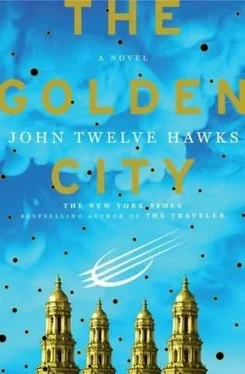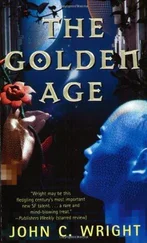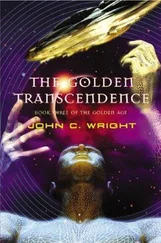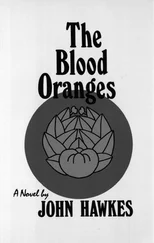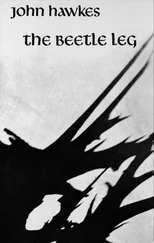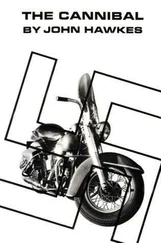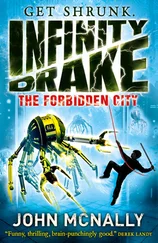Had Maya painted the message? That was possible, but Maya probably would have included the lute or interlocking diamond shapes-Harlequin signs. Gabriel stood beside the carousel horse for several minutes as he considered the possibilities. Then he headed down the street in the direction of the arrow. Two blocks away, he found a second message that led him onward to additional signs. The words were always written in red paint, but the size of the letters varied. Sometimes the message was splattered high up on a building like a billboard. But usually there was only a red arrow, painted on the hood of a smashed delivery truck or on a door still hanging from one hinge.
As he drew closer to the center of the city, footsteps appeared in the soot that covered the pavement. On one block he found a dead man lying on his back. The corpse had been there for some time and was dried out like a mummy. With shriveled lips and yellowed teeth, he appeared to be grinning at the destruction around him.
The red arrows were smaller now, as if the messenger had sensed the growing danger and decided to hide. Gabriel found no further clues on the next corner, so he doubled back and discovered an arrow pointing to the building across the street. The massive structure looked like a bombed-out church with a tower on each corner. Its entrance was a semi-circular archway; similar arches shaped each window. Someone had cut words into a marble plaque over the door: Museum of Art and Antiquities .
Wary of a trap, Gabriel stepped into the entrance hall formed by two intersecting arches. The museum once had a ticket booth, a cloak room and a turnstile, but everything had been destroyed. Apparently, someone had felt particular hatred for the turnstile and had taken the time to heat up the brass bars in a bonfire, and twist them into pincers that reached toward the ceiling.
He had heard about the city’s museum and library when he was a prisoner, but he had never been allowed to see the ruins. Turning to the right, he stepped into an exhibit hall filled with smashed glass cases. One still had a brass plaque that read: Ceremonial Drinking Cups from the Second Era .
There were no flares to light the interior of the museum, but the windows on one side of the room looked out on a courtyard with a fountain at the center. Gabriel stepped through the window frame and approached the fountain. Sea monsters with gaping mouths had once spat water into the fountain pool, but now the green marble was covered with soot and delicate flakes of ash.
“Who are you?” a man asked. “I’ve never seen you before.”
Gabriel turned around, looking for the speaker. There was no one else near the fountain, and the smashed windows that faced the courtyard looked like picture frames displaying sections of the night. What should I do? He thought. Run? In order to escape to the street, he would have to pass back though the museum to the turnstile.
“Don’t waste your time trying to find me.” The speaker sounded proud of his invisibility. “I know every part of this building. It’s my refuge. Not yours. What are you doing here?”
“I’ve never been in the museum. I wanted to see what was inside.”
“There’s nothing here but more destruction. So go away.”
***
Gabriel didn’t move.
“Go away ,” the voice repeated.
“Someone painted messages on the walls. I followed them here.”
“That has nothing to do with you.”
“I’m the Traveler.”
“Don’t start lying.” The voice was harsh, contemptuous. “I know what the Traveler looks like. He came to the island a long time ago and then vanished.”
“I’m Gabriel Corrigan.”
There was long pause, and then voice spoke with a cautious tone. “Is that really your name?”
Gabriel had once seen photographs of an army sniper wearing something called a ghillie suit-a ragged assembly of dark green fabric that changed a person’s silhouette and allowed him to blend into the countryside. The dark man stepping through the doorway had created a similar costume for hiding in the corridors of the abandoned museum. Swatches of gray and black fabric were sewn together in a haphazard manner to make a smock and trousers. Rags were wrapped around the man’s shoes. A gauzy black veil hung from the brim of a hat and covered his face. Silently, the dark man glided across the courtyard before stopping ten feet away from Gabriel.
“Matthew Corrigan told me that he had two sons named Gabriel and Michael.”
“And who are you?”
The ghost hesitated and then raised the veil covering his face. He was a tired-looking older man with thinning hair and very pale skin. Even his brown eyes seemed to have lost most of their color.
“I’m the museum director. When I woke up that first morning, the keys to the museum and some paperwork for a new installation had been left in my apartment. A bill for a new display cabinet was in the folder and my name was at the top of the page.” The man closed his eyes as if reciting a sacred incantation. “Mr. T.R. Kelso is my name. At least, that’s what the document indicated…”
“How did you manage to survive?”
“I hid in the museum during the first wave of fighting and remained here during the different regimes. So far, we’ve had one emperor, two kings and various generals.”
“Do you remember when the Commissioner of Patrols was in charge?”
“Yes, of course. He’s dead now.”
“How long ago was that?”
“We don’t have clocks and calendars here.”
“I know that. But does it feel like a long period of time?”
“It was recent,” Kelso said. “The current leader is called ‘the Judge,’ but there have never been any laws on the island.”
“I’m looking for an outsider, a woman who is a very good fighter.”
“Everyone knows about her,” Kelso said. “Sometimes, I leave the museum, hide in the walls and listen to the patrols. This woman frightens the wolves. They tell stories about her.”
“Is she still alive?”
Kelso surveyed the entire courtyard as if expecting an attack. “It’s dangerous to stand here. Follow me.”
Gabriel followed the ragged figure back into the museum and through the vandalized display areas. Bits of glass and crockery covered the tile floor and they crunched and cracked beneath his shoes. The dark man’s movements were completely silent. He knew where to step and what to avoid. Finally, they reached a room with a mural that showed men and women in blue overalls working the levers of enormous machines. Someone had attacked the picture with an ax or a knife, destroying every face.
They reached a wooden door with a smashed lock in one of the corners. Kelso opened it cautiously, revealing a staircase and a dried-out corpse hanging from a noose.
“What happened?”
“You mean the dead man? I found the body on the street and hung it up here. This is better than a lock or secret entrance. People open the door, see the body and turn away. You would think they’d go up the staircase, but that never happens.”
Kelso slipped around the corpse, and Gabriel followed. They climbed up a circular staircase that ended at the top of a tower with a stone balustrade. It was a perfect place to survey the island-the shattered buildings, the over-grown parks and the dark river. Gas flares rose up from different parts of the city and smoke drifted past the jagged spires of the half-destroyed buildings.
“In the beginning, this really was a museum. The historical exhibits were on the ground floor and works of art were displayed in a first floor gallery. Whoever designed this place paid a great deal of attention to the details. The relics and antiques have vanished, of course, but I’ve done a study of the display case labels. All of them are very specific, mentioning the Twelfth Era or the Third Regime. The island once had a recorded history, a shared story about the past.”
Читать дальше
